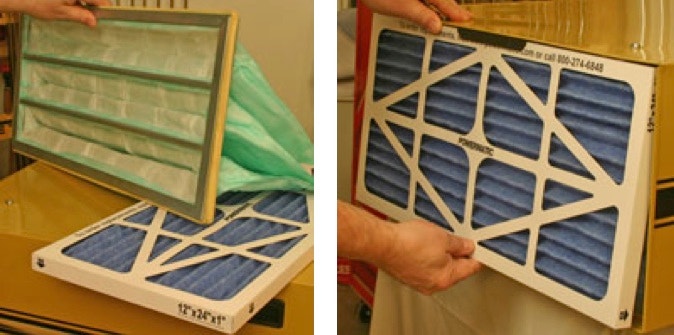Woodshop Air Filtration
If you have a dust collection system in your shop, you may think you're in complete control of your woodshop dust situation. In reality, you're only half way there.
Unfortunately, a thorough explanation of dust collection design - including formulas for calculating air volume, velocity and static pressure losses - is beyond the scope of this article.
"Respirable" dust particles 10 microns and smaller are invisible to the unaided eye, and are extremely difficult to capture with a typical dust collection set-up. In the significant quantities kicked out in most woodshops, fine dust particles also pose a serious threat to the human respiratory system, with health consequences ranging from cold and flu–like symptoms and moderate allergic reactions to the risk of certain forms of cancer.
To really get on top of the woodshop dust control problem, you need to take a two-pronged approach: You need a dust collection solution for the bulky chips, shavings and large particle saw dust, and you need a ventilation or air filtration solution to keep the fine dust in check. And unless you live in the most favorable of climates where fresh air can be continually brought in form outside, air filtration will be the most practical solution.
Air filtration systems are outfitted with continuous duty motors and high surface-area filters that make them uniquely suited for cleansing woodshop air of fine dust particles. They’re fairly simple, unobtrusive machines. They hang form the ceiling of your shop, out of the way of you and your work. All you have to do is replace the filer periodically and remember to flip on the switch when you start work.
How much air filtration does your shop need? Your filtration system should be capable of filtering the entire volume of air in your shop 6 to 8 times every hour. To find the air moving capacity necessary for your shop, follow this formula:
Find the total volume of air in your shop in cubic feet (if your ceilings are more than 12' high, use 12' as your height):
Volume = length x width x height
Multiply the air volume by the number of cycles per hour that you want to move the air through the filtration system (use 6 if you are a one person shop and don't do an extraordinary amount of sanding or carving with abrasives, otherwise use 8) and divide the result by 60 (an air filtration system's capacity is rated in cfm or “cubic feet per minute”; dividing by 60 translates the time factor into minutes instead of hours):
Necessary air moving capacity (cfm) = volume x cycles / 60
All that's left is to choose an air filtration system that meets the cfm requirements for your shop.
Keep the inspiration coming!
Subscribe to our newsletter for more woodworking tips and tricks



